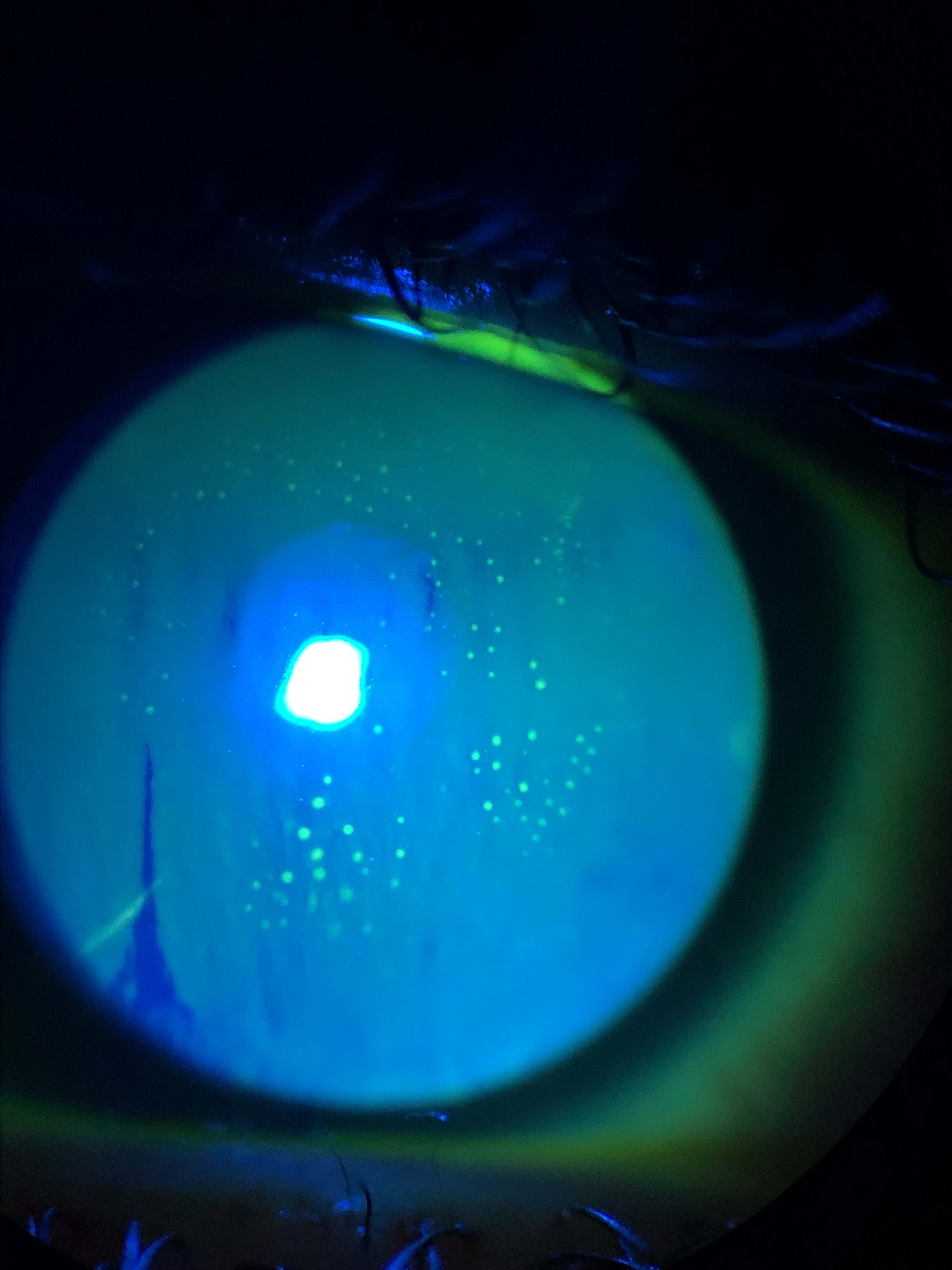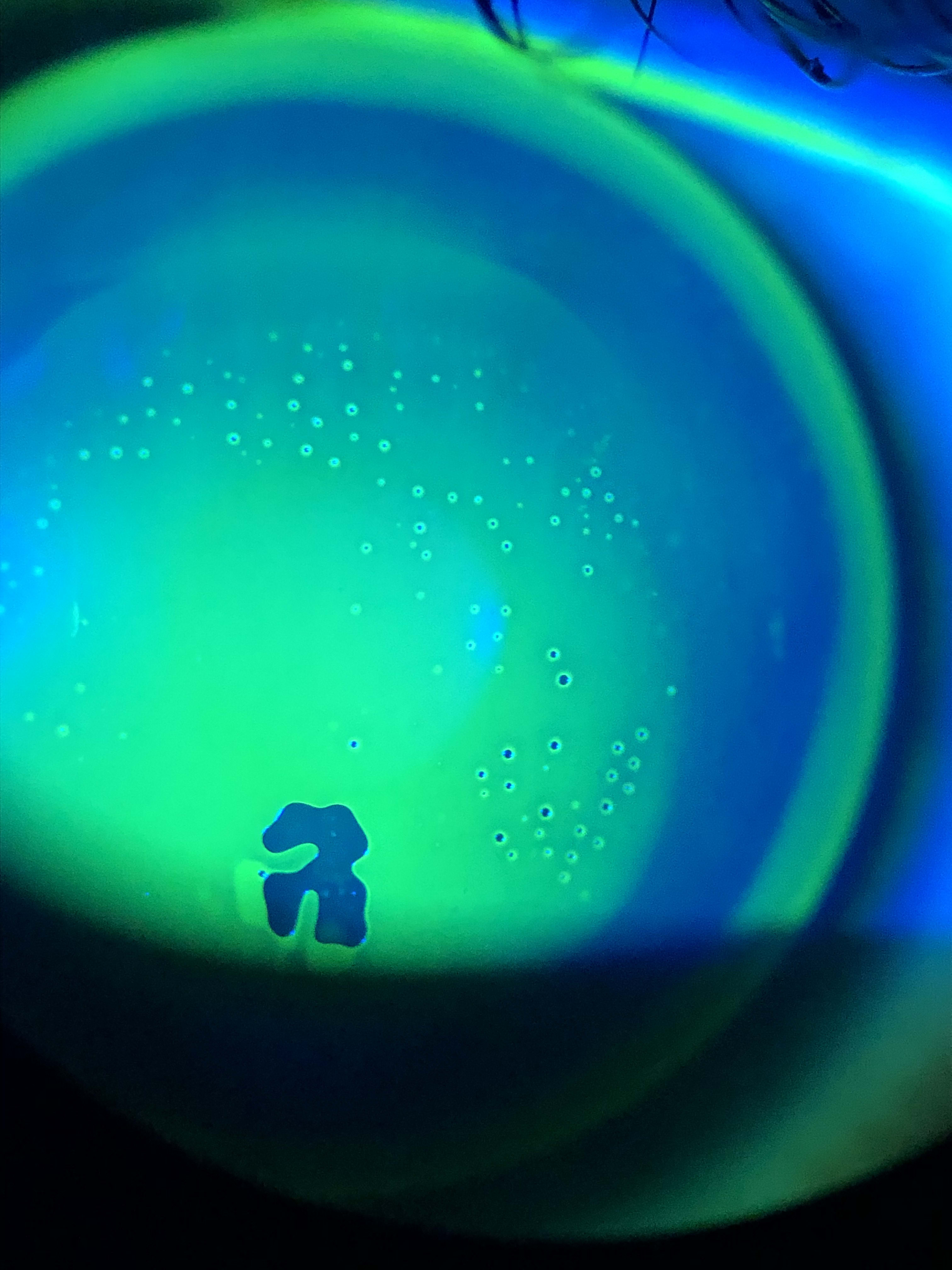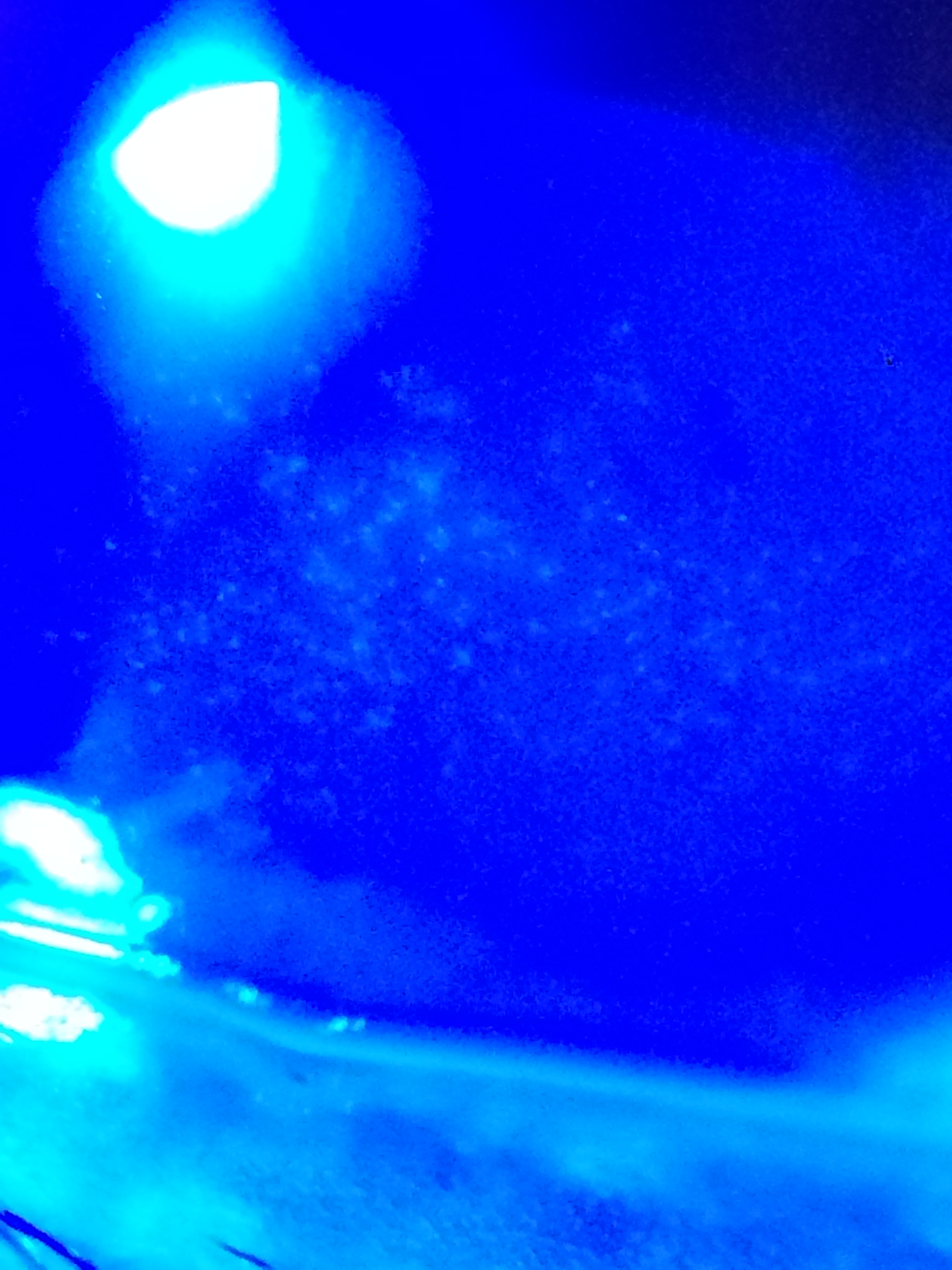A 42-year-old Caucasian female presented for a contact lens follow-up. She has a history of high myopia with corneal GP lens wear for several years.
Exam Findings
Evaluation of the corneas after lens removal revealed several discrete circular areas of hyperfluorescent sodium fluorescein (NaFl) (Figure 1). With the corneal GP lenses applied, small air bubbles were noted over the same areas of hyperfluorescent NaFl with an isolated larger bubble in the left lens (Figure 2). The small air bubbles were identified as dimple veiling; however, the larger air bubble signified a steep fitting relationship and new lenses were ordered to improve the fit.


Discussion
Dimple veiling can sometimes be confused with punctate epithelial erosion (PEE) staining (Figure 3). However, dimple veiling is much brighter and very circular in shape compared to PEE. It is caused by small air bubbles under a lens that indent the cornea, allowing NaFl to pool. This effect resolves after discontinuing lens wear for several minutes to hours.
These small bubbles are not usually a concern, but a large amount of them can cause reduction in vision. They can also occur with excessive clearance of a corneal GP lens as occurred with this patient. Improving the corneal GP lens fit or adding fenestrations have been shown to improve the presence of dimple veiling.1

Conclusion
Dimple veiling can be resolved with an improved corneal GP fit but should not be concerning if visual acuity is not impacted. This can be a sign of a steep fitting contact lens relationship and may occur more commonly in irregular corneas than regular ones.
References
1. Stapleton F, Bakkar M, Carnt N, et al. CLEAR - Contact lens complications. Cont Lens Anterior Eye. 2021 Apr;44(2):330-367. doi: 10.1016/j.clae.2021.02.010



